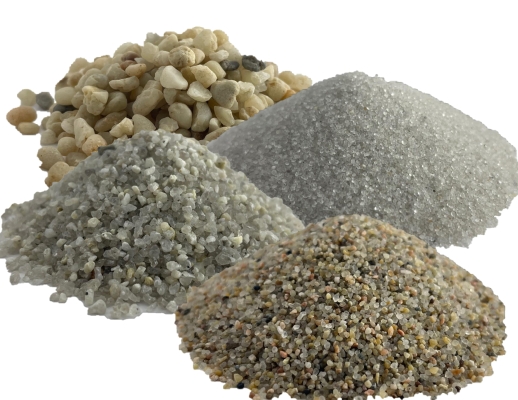
When discussing sandblasting media, having the right abrasive is key to achieving clean, consistent, and cost-effective results. Whether you’re restoring automotive parts, prepping structural steel, or refurbishing industrial components, the choice can influence finish quality, productivity, and safety. In this 2025 guide, we’ll walk through how to select sandblasting media wisely, highlight trends and standards, and point you toward what UniWest Denver currently offers to support your blasting work.
Understanding the Role of Sandblasting Media
At its core, sandblasting media refers to any abrasive material that’s propelled against a surface under pressure to clean, strip, profile, or shape it. The performance of your blasting process heavily depends on characteristics like hardness, particle shape, size distribution, durability, and dust generation. Well‑chosen material yields faster removal, better surface profile, fewer replacements, and lower operational expenses. Mistakes in selection can lead to overuse, surface damage, or excessive cleanup costs.
Types & Their Applications
Here are the most common media you’ll encounter, with notes on their strengths, trade‑offs, and typical uses in 2025.
Garnet
One of the most modern and preferred abrasives, garnet is chemically inert, low in dust, and highly reusable. Its sub-angular shape delivers consistent surface profiles and efficient cutting. UniWest stocks a full line of garnet and garnet blends through its Blasting Media offerings. UniWest
GMA Garnet, for example, markets its sandblasting media line as engineered to cut faster and reduce consumption—making it a top pick for industrial users.
Aluminum Oxide
A synthetic abrasive that is harder than many natural media, great for removing coatings, deburring, or prep before coatings. It is durable and can be recycled often, though it may cost more up front.
Glass Beads
Ideal for surface cleaning and light finishing where you want to avoid sharp profiling. Glass beads leave a smooth surface, making them suitable for delicate parts or decorative finishes.
Crushed Glass / Crushed Bottle Glass
Often marketed as eco-friendly, crushed glass can be cost-effective for moderate blasting jobs. However, it typically has less reuse potential and may produce more fines than garnet or aluminum oxide.
Steel Shot / Steel Grit
These durable metallic abrasives are used where aggressive cleaning or peening is needed—like in shipbuilding, heavy machinery, or structural steel. They deliver high impact and high recycling potential but require equipment rated for heavier media.
Soda Blasting Media (Sodium Bicarbonate / Armex)
While not a “sand” in the traditional sense, soda media is widely used for stripping coatings, smoke damage, and in situations needing nonabrasive techniques (e.g. fire remediation, engine decarbonization). It is gentle, low‑dust, and nonreactive with many substrates.
Factors to Consider When Selecting Sandblasting Media
Hardness & Durability
You want it hard enough to cut coatings, but not so hard that it damages the substrate or rapidly wears your blast equipment.
Particle Size & Shape
A mix of coarse and fine particles (an engineered blend) often gives you both cutting punch and finishing finesse. Overly large or irregular size may clog your blast nozzle or cause uneven removal.
Reusability
Media that holds together under repeated impact minimizes cost per job. Garnet and steel shot, for instance, offer excellent reuse potential.
Dust Control & Safety
Dust generation is a major concern. Media that fractures easily or produces abundant fines increases cleanup, wears filters, and exposes operators to risk (silica in particular poses health hazards).
Environmental & Regulatory Compliance
Opt for material that’s inert, low in contaminants, and allowable under local regulations. UniWest’s inventory includes options that align with safety and environmental standards.
Availability & Logistics
Choosing material your supplier stocks reliably matters. UniWest’s “Blasting Media” category lists a broad selection—including garnet, aluminum oxide, glass, slag, and specialty—providing flexibility and timely access.
Best Practices & Tips for Using Sandblasting Media
- Match it to your substrate and job goal (e.g., smoother profile vs maximum removal).
- Size your nozzle and pressure correctly—a mismatched combination leads to waste or poor results.
- Monitor wear and discard fines before they affect performance.
- Use proper dust collection and personal protection to contain airborne particles.
- Test small batches first before full-scale blasting, especially when switching types.
Ahead into 2025: Trends & Considerations
In 2025, operators are increasingly adopting hybrid strategies—blending sandblasting media types like garnet with finer or coarser grains—to fine-tune results. There’s also a noticeable shift toward more aggressive media recovery processes and the adoption of lower-dust abrasive options to support cleaner operations. Some facilities are even integrating smart monitoring systems to track usage and wear in real time. Sustainability continues to drive innovation, with growing demand for recycled media such as crushed glass and expanded use of garnet recovery systems, alongside stricter dust emission controls.
Your Next Step in Media Decision‑Making
Choosing the right sandblasting media can transform the efficiency, cost, and finish quality of your operations. With 2025’s advances in engineered abrasives, recovery systems, and environmental awareness, you’ll want media that fits your substrate, job scale, and regulatory environment.
At UniWest Denver, we carry a wide variety of high-quality material—from garnet to aluminum oxide to specialty blends—and we’re ready to help you assess which material is ideal for your applications.
 UniWest
UniWest